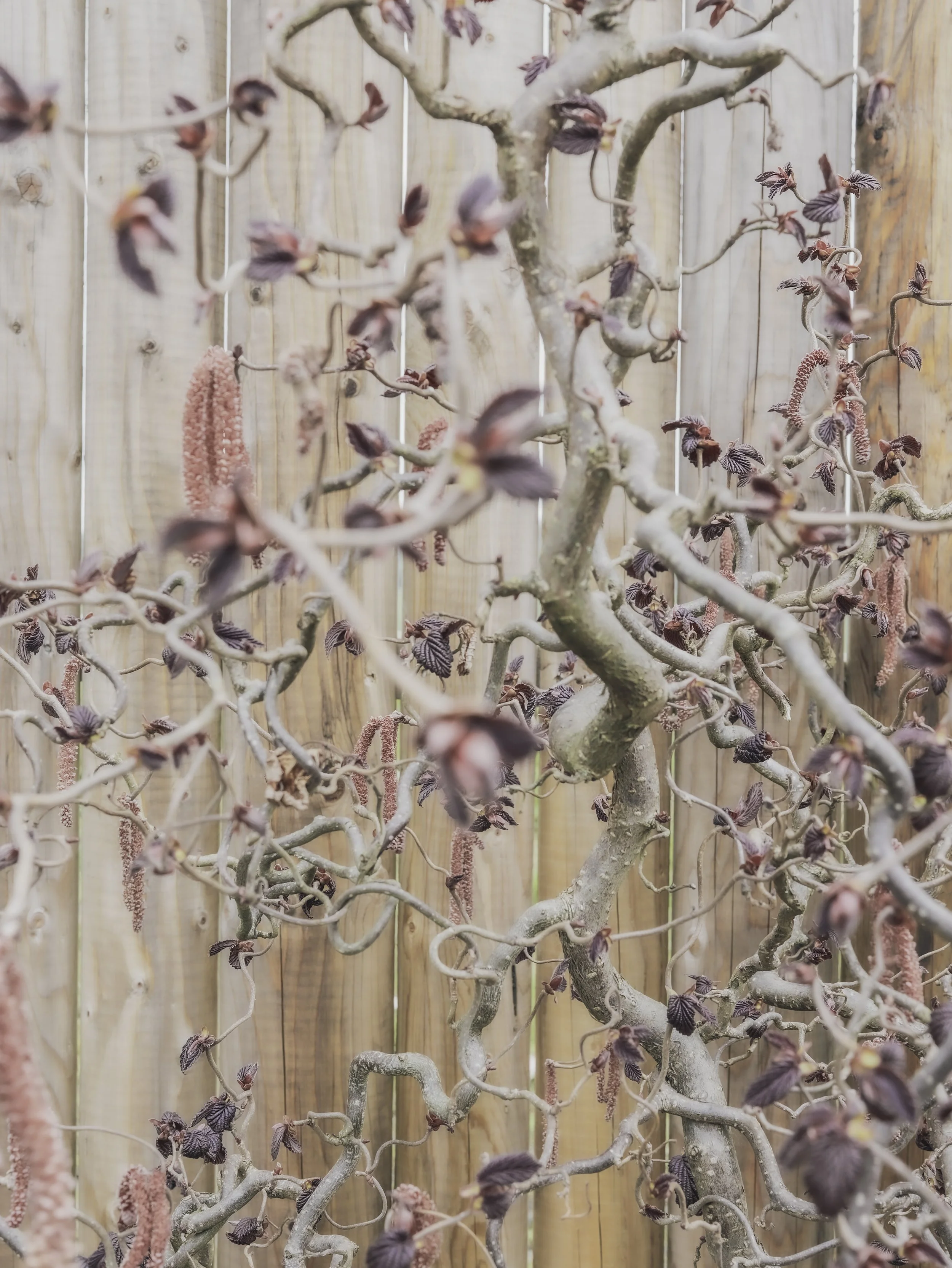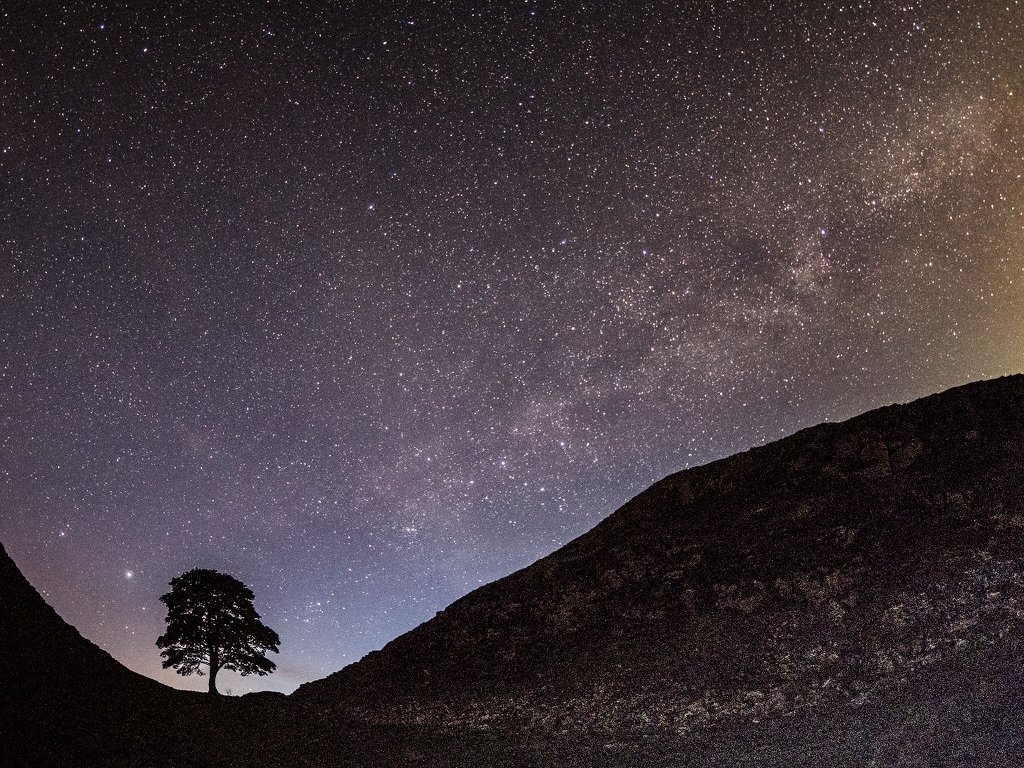A Day In The Garden
I wanted to visit Alnwick Garden in April because of the many blossom trees grouped together, which can make for rich, beautiful photographs. I’d previously visited the gardens with my family just before Christmas and was really impressed by how magical the place felt.
There’s an adventure playground there called Lilidorei, centred around what I can only describe as a huge, elf-like castle. It features towering slides, rope bridges, and globe-shaped cages—presumably prisons for intruders—hanging 20 to 40 feet above the ground. It's an impressive structure, and children seem absolutely captivated by it.
Surrounding the castle is a long, winding path flanked by fir trees. Hidden among them are wooden huts, homes to trolls, fairies, witches, and all manner of magical creatures. As you explore, you can hear their whispers in the bushes. At Christmas, the fir trees are lit with fairy lights, creating a magical atmosphere for little ones. For the rest of the year, the trees remain, though the lights are taken down, and yet the sense of enchantment still lingers.
The gardens themselves are beautifully maintained, with elegant fountains, landscaped areas, and even a poison garden for those with a slightly more macabre disposition.
I’ve been studying photography for seven years now, and one of the challenges I constantly face in places like this is the sheer number of photos that have already been taken. It’s difficult to come away with something original. The same goes for local landmarks in the North East of England: The Tyne Bridge, The Angel of the North, Bamburgh Castle. I would’ve included Sycamore Gap in that list too, but sadly, it was cut down a few years ago, making headlines around the world. It had been one of the most photographed trees globally.
When you’re a budding photographer, you’re naturally drawn to these iconic locations. They’ve been captured hundreds of thousands, if not millions, of times. Sure, every sunset and snowfall brings a unique atmosphere, but even then, it can feel like it's all been done before.
I once hiked to Sycamore Gap from the Steel Rigg car park at 2 a.m. to photograph the tree under a star-filled sky. Not an easy journey in the pitch black, carrying camera gear and a tripod, but I got a great shot. Ironically, I keep seeing near-identical photos cropping up, including one in the Alnwick Garden gift shop just the other day.
Improving as a photographer, like in any discipline, requires practice. As I’ve mentioned in previous blog posts, I don’t believe in complete originality—we’re all influenced in some way. A neighbour of mine, also a skilled photographer, once told me, “You need to take at least 20,000 shots before you even start to find your style.” I’ve heard similar advice many times over the years, and I think it holds true.
I’ve definitely put in the reps. My Lightroom library is now past 230,000 images. Technology has changed the game. Twenty-five years ago, every shot cost money. You had to buy film, pay for developing, and be far more deliberate. Experimentation was expensive. Today, with high-capacity memory cards and cameras that shoot 20 frames per second, many photographers have adopted a spray and pray mentality. I imagine Henri Cartier-Bresson would be spinning in his grave. That "decisive moment" he spoke of is now much easier and cheaper to capture.
But that’s a topic for another blog.
Back to Alnwick. One way to ensure originality in your photography is by photographing your own family, and that’s something I’ve been focusing on recently. I’m working on a long-term project called The Ties That Bind. Family has long been a subject for many great photographers. I’ve been especially inspired by Phillip Toledano’s Days with My Father, and the work of Christopher Anderson and Sally Mann on their respective families.
A few of the images I took at Alnwick will almost certainly make it into that project.
Lately, I’ve also been experimenting with more abstract photography—slowing shutter speeds, intentional camera movement, and shifting perspectives to transform the ordinary into something new. I recently picked up a Polaroid camera as well. The film is expensive—about £2 per shot—which really forces you to slow down and think carefully before you press the shutter. You get just 8 shots per cartridge, so every frame counts. There's no post-editing either. Sure, you can scan Polaroids into Lightroom, but for me, that defeats the purpose. Part of the appeal is accepting the image as it is.
So with my Polaroid, two packs of film, my digital camera, and my family, we set out to Alnwick—hoping to capture something a little different. And I think, in some small way, I succeeded.


















